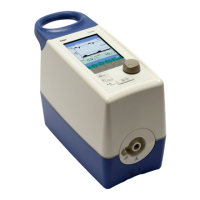Instructions for use Carina SW 3.2n 69
Operation
Additional information
Configuring the display for Ti or I:E,
see page 93.
Using non-invasive ventilation, see page 69.
Using apnea ventilation, see page 70.
Using AutoAdapt, see page 71.
Setting the alarm limits, see page 84.
Non-invasive ventilation (NIV)
This chapter describes the use of non-invasive ven-
tilation in the NIV application mode.
All ventilation modes can be selected in the NIV ap-
plication mode.
Safety Information
WARNING
Risk of patient injury
If a device fails, there is the risk of CO
2 re-
breathing.
Do not use masks that cover the entire face or
the nose and mouth for patients who are unco-
operative, partially conscious, apathetic or un-
able to remove the mask.
WARNING
Risk of patient injury
Without ventilation there is a risk of CO
2 re-
breathing. If the device is not ventilating, the
mask must not remain on the patient.
Instruct the patient on how to remove the
mask.
WARNING
Risk of patient injury
When the inspiratory time is extended, the risk
of CO
2 rebreathing is increased. When the in-
spiratory time is longer, the expiratory time is
reduced, which means that less CO
2 is re-
moved from the breathing circuit before the
next respiratory cycle. Under these conditions
the volume of CO
2 rebreathed by the patient is
further increased with increased tidal volume.
Adjust the I:E ratio.
WARNING
Risk of patient injury
Use of masks increases the dead space. If the
dead space is too high, the patient's etCO2
concentration may be increased.
Observe the mask manufacturer's instruc-
tions.
WARNING
Risk of aspiration
Danger of aspiration due to high airway pres-
sures.
Avoid high airway pressures.
NOTE
Masks with anti-asphyxia valve and exhalation
ports (airflow masks) are not recommended for
use with Carina. Use only masks with standard el-
bows (not airflow masks). Otherwise the accuracy
of the volume measurement may be impaired.

